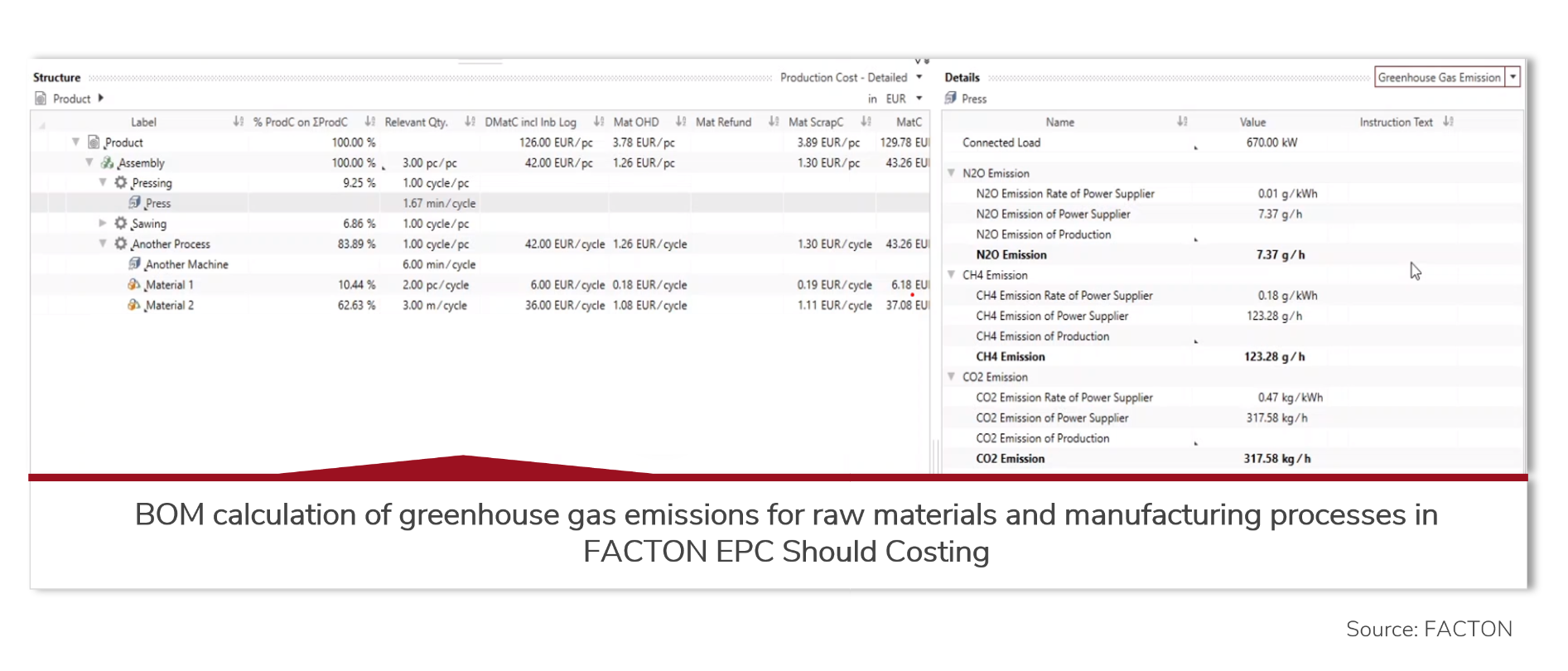In Europe, carbon-neutral production has gained momentum with the Green Deal. Among other things, the European Commission is focusing on emission-free steel production and an environmentally friendly lifecycle for batteries - from production to recycling. The increase in global greenhouse gas emissions and climate protection targets trigger changes in the industry: For example, Daimler CEO Ole Källenius, announced at the IAA Conference 2019 that carbon-neutral production would become a criterion for suppliers. The company itself wants to produce CO2-neutral from 2022. Another example: Siemens aims to become climate-neutral by 2030.
Integration of green electricity and sustainable materials, use of waste heat from production processes and recycling of old products - the measures apply to all industries over the entire product lifecycle. When calculating the Product Carbon Footprint (PCF), companies cannot focus solely on determining the greenhouse gases emitted (including carbon dioxide, methane, and nitrous oxide). Enterprise-wide cost calculation will be crucial to the implementation of climate-neutral and profitable production.
Sustainable engineering: Finding sources of greenhouse gases in engineering
The basis for consideration is the bill of materials (BOM), as it is created in the product development phase for cost calculation. The BOM contains various points for global greenhouse gas emissions. Starting with the raw material, through the individual manufacturing steps to the outgoing freight. Cost engineers use various sources for a holistic view of greenhouse gas emissions. These include not only carbon dioxide but also climate-relevant gases such as methane or nitrous oxide.
CO2 calculator: How can cost engineering determine greenhouse gases in a calculation for raw material or purchased part?
The parts list can be used to determine greenhouse gas emissions for individual elements. The procedure should be outlined here (taking into account that the assumptions described are correct)
Step 1: Determine greenhouse gases for raw materials
Each raw material/purchased part contains information on the amount of greenhouse gases emitted in the production of one kilogram (raw material) or one piece (purchased part). The values may vary depending on the supplier, e.g. when producing 1 kg of steel. It can be assumed that production in a country with a high proportion of coal-fired electricity emits more greenhouse gases than in a country with a high proportion of renewable energy.
⇒ Cost engineers store the amount of climate-relevant gases emitted as a master data and used for the sum of greenhouse gases.
Step 2: Capture of greenhouse gas emissions in manufacturing
Cost engineers start with two questions: Which processes are necessary to produce a marketable product from raw materials and purchased parts? Which greenhouse gases are emitted? Two factors are important for the cost calculation:
- The amount of greenhouse gases produced per kWh of electricity. The data is compared with the power consumption of the machine and the relevant cycle time.
- The amount of greenhouse gases that are generated by the individual processing steps and cannot be reduced (like operating materials).
⇒ After determining the parameters, companies can easily calculate the amount of greenhouse gases emitted during production using a calculation software.
Step 3: Include logistics in the calculation of greenhouse gas emissions
In addition to raw materials and production, logistics between customer and supplier must be considered when calculating the CO2 footprint:
- What means of transport (plane, ship, truck, etc.) are used to ship the product? What distances are covered by various means of transport?
- Which distances lie between the contractual partners?
CO2 balance: Calculating the costs of carbon-neutral production
Using the bill of materials in a calculation solution, cost engineers can reliably integrate the costs of greenhouse gas emissions into the product cost calculation. The calculation indicates the quantity of greenhouse gases emitted by the production of a part and identifies the cost effects of avoiding greenhouse gases. This applies, for example, to taxes levied by a country. At this level, cost experts are required to differentiate between directly and indirectly released greenhouse gases.
The calculation is completed by answers to the question what role the emitted greenhouse gases have in the provision of the infrastructure, e.g. machines, tools, administration, storage, etc.
In addition to determining the greenhouse gases emitted by raw materials, production and logistics, the product carbon footprint can be further defined - all the way to disposal. In this case, the energy consumption during the product's lifetime and the amount of greenhouse gases emitted during disposal would also have to be recorded.
⇒ Would you like to discuss the topic of greenhouse gases and CO2 balance in cost calculation further with us? Just write me an e-mail productmanagement (at) facton.com.


.png?width=600&name=ghg-emissions-by-sector%20(1).png)

